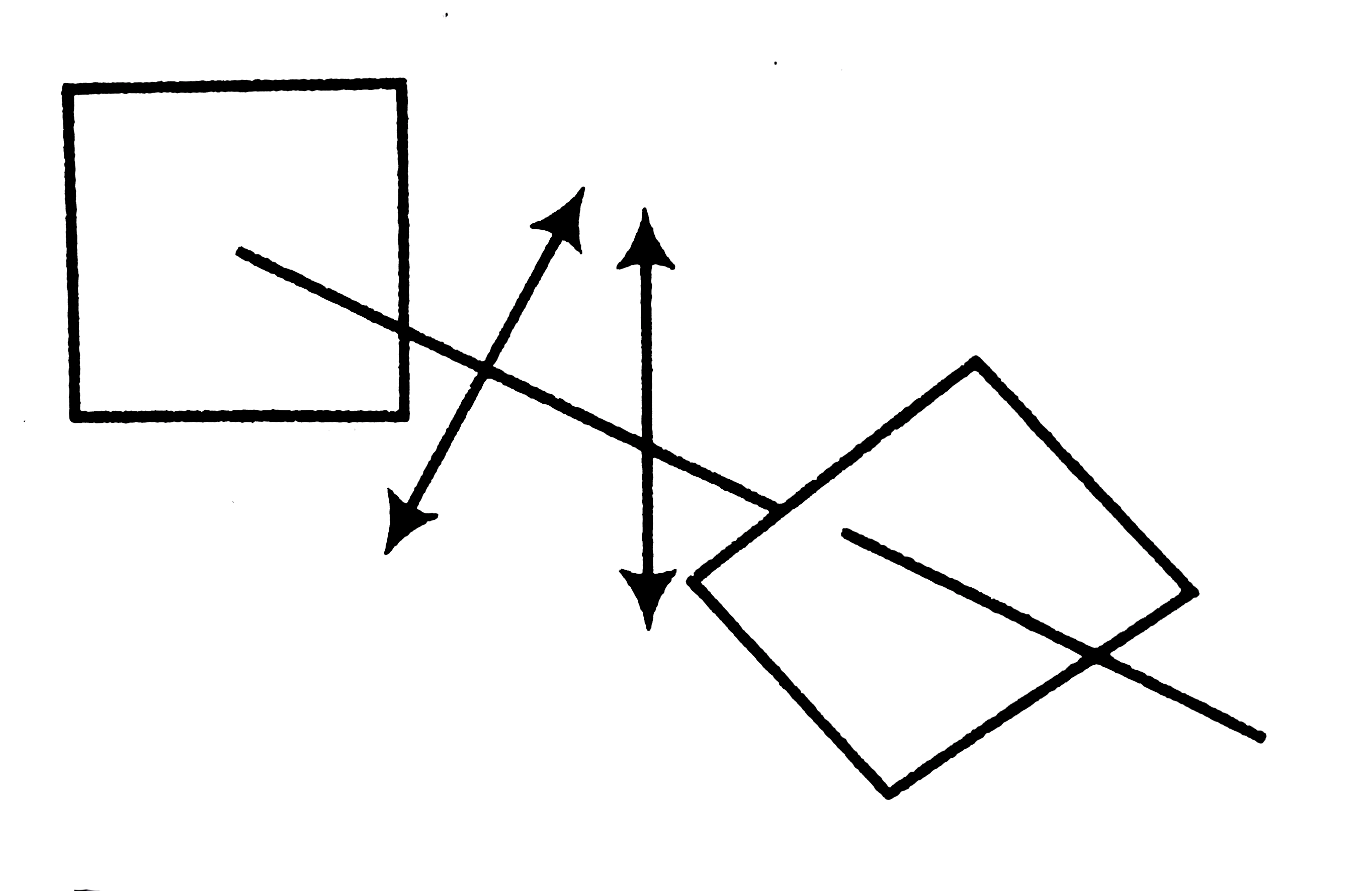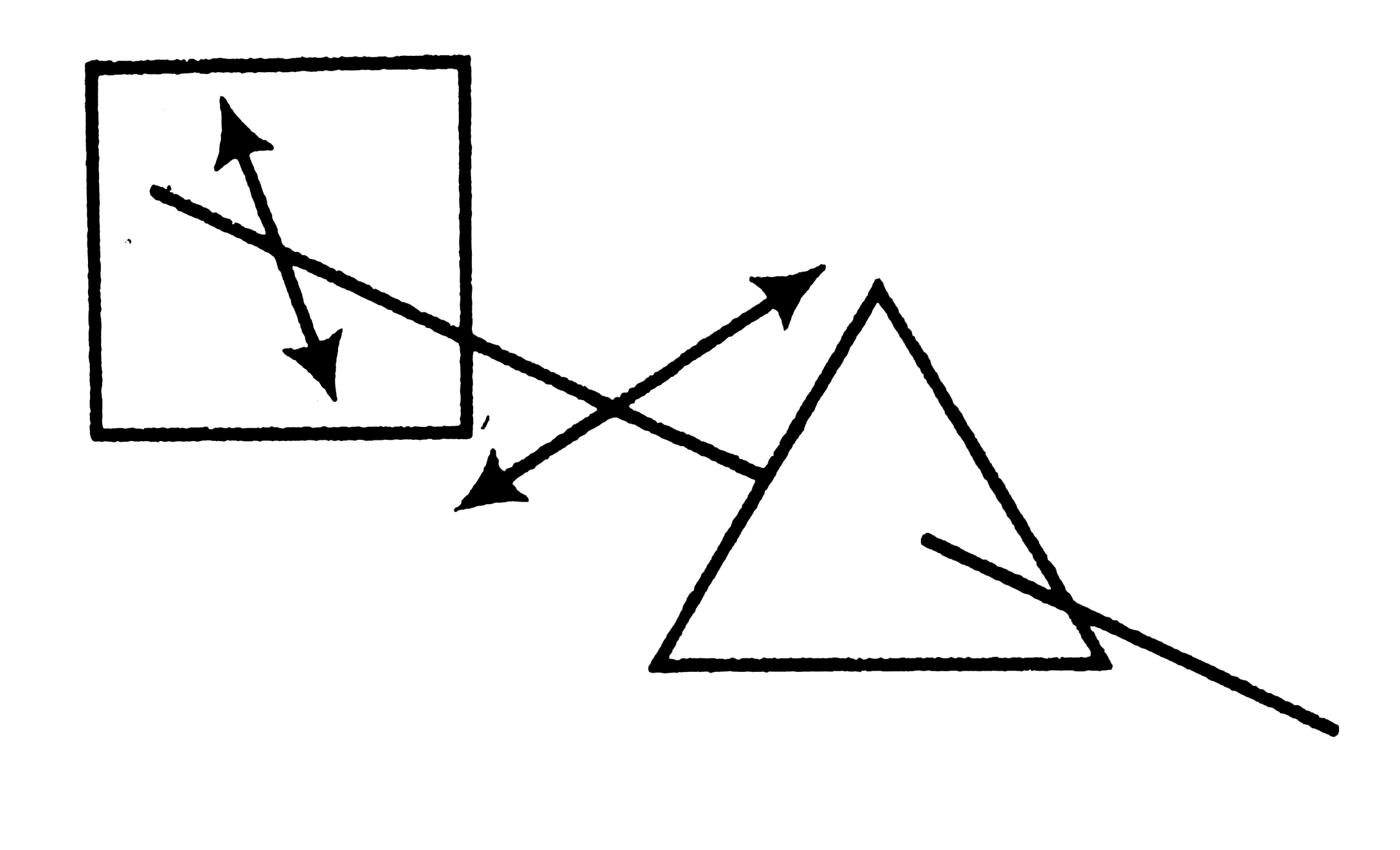Light from an ordinary source (say a sodium lamp) is passed through a polaroid sheet P1. The transmitted light is then made to pass through a second polaroid sheet P2 which can be rotated so that the angle θ between the two polaroid sheets varies from 0∘ to 90∘. Show graphically the variation of intensity of light transmitted by P1 and P2 as a function of angle θ. Take incident beam intensity I0. Why does light from clear blue portion of sky show a rise and fall of intensity when viewed through a polaroid which is rotated ?
When incident beam intensity from an ordinary source is I0, beam intensity of polarised light from P1 is I0/2. If θ is angle between P1 and P2, then according to law of Malus, intensity of polarised light from P2 is
I=I02cos2θ
When θ=0∘, I=I02cos2θ=(I02)
When θ=30∘, I=I02cos230∘=34(I02)
When θ=45∘, I=I02cos245∘=12(I02)
When θ=60∘, I=I02cos260∘=14(I02)
When θ=90∘, I=I02cos290∘=Zero
The variation of I with θ is plotted in Fig.
The blue colour of sky is due to scattering. Light from clear blue portion of sky polarised by scattering. The polaroid through which this light is observed atcs as analyser. The intensity of light viewed through rotating polaroid varies as per law of Malus.

Topper's Solved these Questions
- OPTICSBOOK - PRADEEPCHAPTER - OPTICSEXERCISE - Value based questions
3 Videos
- OPTICSBOOK - PRADEEPCHAPTER - OPTICSEXERCISE - Exercise
582 Videos
- OPTICSBOOK - PRADEEPCHAPTER - OPTICSEXERCISE - Long answer questions (NCERT Ch - 10)
2 Videos
- MAGNETIC EFFECT OF CURRENT AND MAGNETISMBOOK - PRADEEPCHAPTER - MAGNETIC EFFECT OF CURRENT AND MAGNETISMEXERCISE - Competition Focus (Multiple Choice Questions)
2 Videos
Similar Questions
If the light from an ordinary sodium lamp, having an intensity I, passes through a polaroid sheet, the intensity of emergent light is _____.
View SolutionA partially plane polarised beam of light is passes thorugh a polaroid. Show graphically the variation of transmitted light with angle of rotation of polaroid.
View Solution
Knowledge Check
When light passes through two polaroids P1andP2, then transmitted polarisation is the component parallel to the polaroid axis.
Which of the following is correct?A B
B C
C D
D
Plane polarised light is passed through a polaroid. On viewing through the polaroid we find that when the polaroid is given one complete rotation about the direction of light
AThe intensity of transmitted light gradually decreases to zero and remains zeroBThe intensity of transmitted light gradually increases to maximum and remains maximumCThere is no change in intensityDThe intensity of transmitted light is maximum and zero two tirties during rotation
An unpolarized light with intensity 2I0 is passed through a polaroid. The resultant intensity of the transmitted light will be
View SolutionA narrow beam of unpolarised light of intensity I0 is incident on a polaroid P1. The light transmitted by it is then incident on a second polaroid P2 with its pass axis making an angle of 60∘ to the pass axis of P1. Find intensity of light transmitted by P2.
View SolutionUnpolarised light is passed through a polaroid P1. When this polarised beam passes through another polaroid P2 and if the pass axis of P2 makes angle θ with the pass axis of P1, the write the expression for the polarised beam passing through P2. Draw a plot showing the variation of intensity when θ varies from 0 to 2π.
View SolutionUnpolarised light of intensity I is incidnet of the polaroid. What will be the intensity of light transmitted by the polaroid?
View SolutionUnpolarised light is passed through a polaroid P1. When this poalrised beam passes through another polaroid P2, and if the pass axis of P2 makes an angle θ with pass axis of P1, then write the expression for the polarised beam passing through P2. Draw a plot showing the variation of intensity when θ varies from 0 to 2 π.
View Solution(a) When an unpolarised light of intensity I0 is passed through a polaroid, what is the intensity of the linearly polarised light ? Does it depend on the orientation of the polaroid ? Explain your answer.
(b) A plane polarised beam of light is passed through a polaroid. show graphically the variation of the intensity of the transmitted light with angle of rotation of the polaroid in complete one rotation.
View Solution
